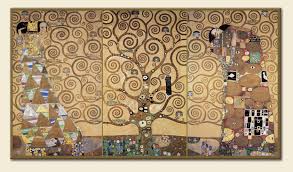Perhaps i am ready to launch a full on attack on role theory.
How about this:-
When personality is central, response and attention to the forces of life and spirit can easily become diffuse and scattered. When there is love for the life in the present, for the experience of presence, there is freedom and movement. This 'love' for spontaneity is warm-up. An attitude of readiness, willingness and attention to what is emerging and being lived can be called warm-up.
Role theory must be junior to spontaneity. Role theory must serve the purpose of warm-up, to evoke spontaneity.
"there is no need for an ultimate definition of roles ... they are created before our eyes .... They define themselves as they emerge from status nascendi to full mature shape." (Moreno, Vol 1, p. 340).
One must be very careful in doing any personality analysis, that it does not result in any kind of smugness or even knowing, as that will create an extra barrier to the fresh experience of the emerging life.
A quiet wander through certain aspects of role theory and warm-up.
The following are highly draft, or perhaps drafty, thoughts in this area. I will shortly be required to craft an academic response to the generous folks who let me know that my definition of warm-up is almost identical to what they consider to be a definition of role. So I wander around and have added a few diagrams which I found very stimulating.
Warm-up and Roles are similar to one another as, perhaps, personality, as a construct, and personality theories, as descriptions of that construct, are to one another.
Warm-up is implicit in role theory, but role theory is not implicit in warm-up. Here are a few indicators this may be so. Role theory may be used to indicate a warm-up, such as, "The protagonist appeared to be warming-up to being a rageful god." Role theory may be used to describe the protagonists warm-up "Their warm-up in the role is inadequate." Or role theory may be used to effectively describe the warm-up in dramatic terms, for instance, "They warmed-up to this roles, and in response they warmed up to this role."
I guess I am suggesting that warm-up is more elemental and more on a phenomenal level. Role theory is a theory at a greater level of abstraction. The two theories are intertwined but may be seen as separate and treated as separate. Such as Diagram 1 indicates:
Diagram 1. Warm-up and role theory interactions.

It may be more accurate to see the theories operating in an interconnected fashion such as Diagram 2 displays.
Diagram 7.2. Warm-up and role theory interconnectedness.

Such a diagrammatic display leaves much to be desired as it seems like role theory emerges from the warm-up. Further reflection leads me to conclude, at the moment, that role theory only works, or is useful, because of the presence of one or more observers who are able to interpret a person's behaviour and display in role theory terms as indicated in Diagram 7.3.
Diagram 3. Warm-up and role theory interconnectedness.

Warm-up itself is a semi-continuous phenomena from moment to moment as indicated more accurately by the following Diagram 4.
Diagram 4. Warm-up as a continuous process.

Further reflection shows that role theory may be considered to be an overlay onto a person’s warm-up process. This overlay allows questions such as “What role is the person warming-up to?” to be accurately and meaningfully asked. At the same time allowing for their spontaneity to emerge with varying warm-ups at different times. Role theory, as a theory, sets itself up to make sense of the display, the warm-up.
Please feel free to add or critique by using the post comment function below. They require me to view them first and I will do this asap. Cheers Peter.

